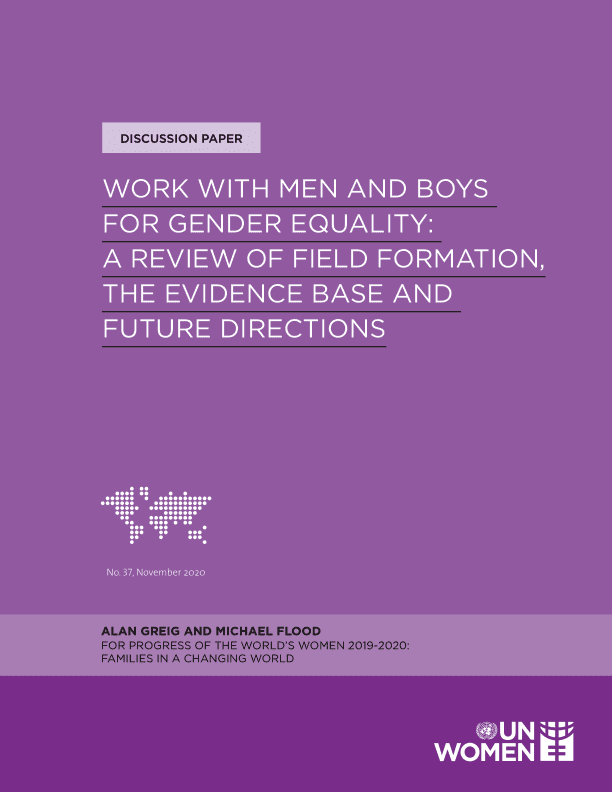Work with men and boys for gender equality: A review of field formation, the evidence base and future directions
Gender equality is not just a women’s issue. It is an issue for all. It is a rights issue because women’s rights are human rights. Working with men and boys, transforming masculinity and traditional perceptions of manhood must be part of the gender equality agenda. Considering this, UN Women has published a new discussion paper about ‘Work with men and boys for gender equality: A review of field formation, the evidence base and future directions.’
The UN Women discussion paper series is led by the Research and Data section. The series features research commissioned as background papers for publications by leading researchers from different national and regional contexts. Each paper benefits from an anonymous external peer review process before being published in this series.
Any assessment of the evidence for gender transformative work with men and boys should consider the conditions that have shaped the emergence of this work. Male-focused gender transformative work has a history, or rather histories. Reviewing its evidence base considering the forces and factors which have informed its emergence over time enriches our understanding of both the findings from, and the silences within, this body of work.
This paper assesses the evidence base of the “men for gender equality” field in light of three aspects of its emergence as a field, namely: its un-interrogated use of the category of “men,” its recourse to social psychological accounts of gender norms and the implications of its NGO forum for its ability to collaborate with and be accountable to resurgent intersectional feminist mobilizations. There is a longstanding critique, both within and of the “men for gender equality” field, that its work remains too focused on the individual, and ‘his’ attitudinal and behavioural change. This paper argues that organizing the “men for gender equality” field around the category of “men” and the problem of “norms of masculinity” has militated against analysis of structural power and social change. The universalist claim of the category “men” has tended to domesticate the paradigm for gender transformative change, foregrounding men’s masculinity as the problem (with its individualizing emphasis on male identities and men’s behaviours) and subsuming under masculinity the multiple relations of power within which men are positioned (with its homogenizing erasure of men’s differing material interests in social change.)
Framing gender transformative work with men in terms of transforming social norms has favoured social psychological accounts of men’s subjectivities over sociological perspectives on patriarchal conditions. This turn to social psychology has itself been aided and delimited by the subsumption of men’s complex positions in social relations under simplistic accounts of multiple “masculinities.” Such accounts, with their reductive rather than complex engagement with manifold and intersecting forces and forms of oppression, have, in turn, limited the field’s capacity to develop an explicit agenda for intersectional antipatriarchal social action and to build alliances with a broader set of social justice struggles and movements.
As a result, the evidence base generated by the field is noteworthy not only for its findings but also its silences. There is a growing body of evidence that well-designed interventions can increase men’s and boys’ gender-equitable attitudes and behaviours, including sexual and reproductive health, parenting and care work, and intimate partner violence and sexual violence. At the same time, most interventions are focused only on micro- and meso-level change, their evidence is uneven, and few evaluations examine wider shifts in gender relations or structures of power.
The paper proposes four directions for the “men for gender equality” field. It must focus on the gendered operations of power and injustice, specifically the uses to which masculinities are put in the maintenance of social hierarchies. It must press for political as well as policy change. This, in turn, calls for more ‘movement’ and less ‘field’: a greater orientation towards anti-patriarchal social action. Finally, such social action requires that evidence-building and evidence-based practice be re-oriented toward the extended timelines and complex processes of social change.
To read the full discussion paper: Click here


